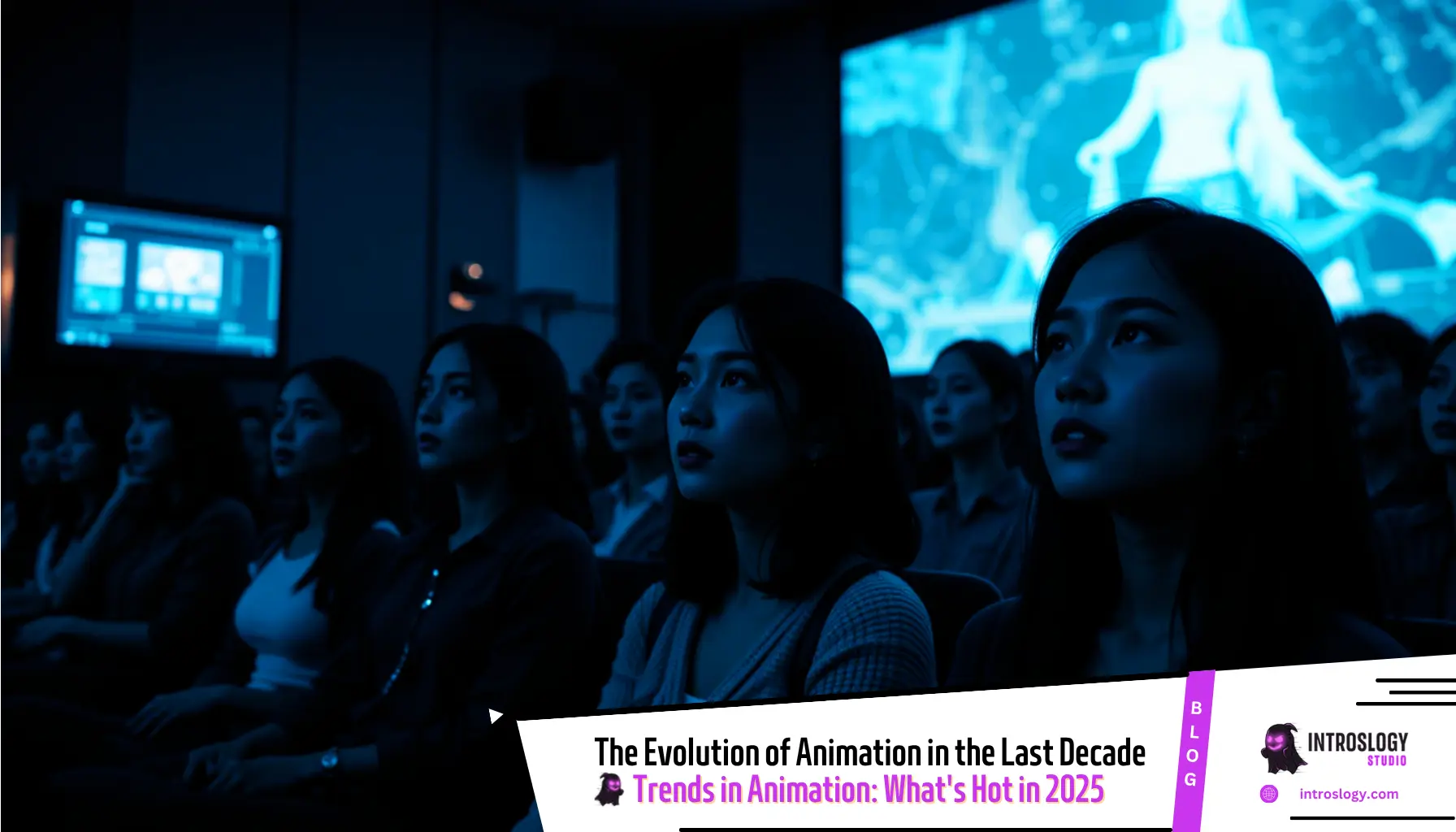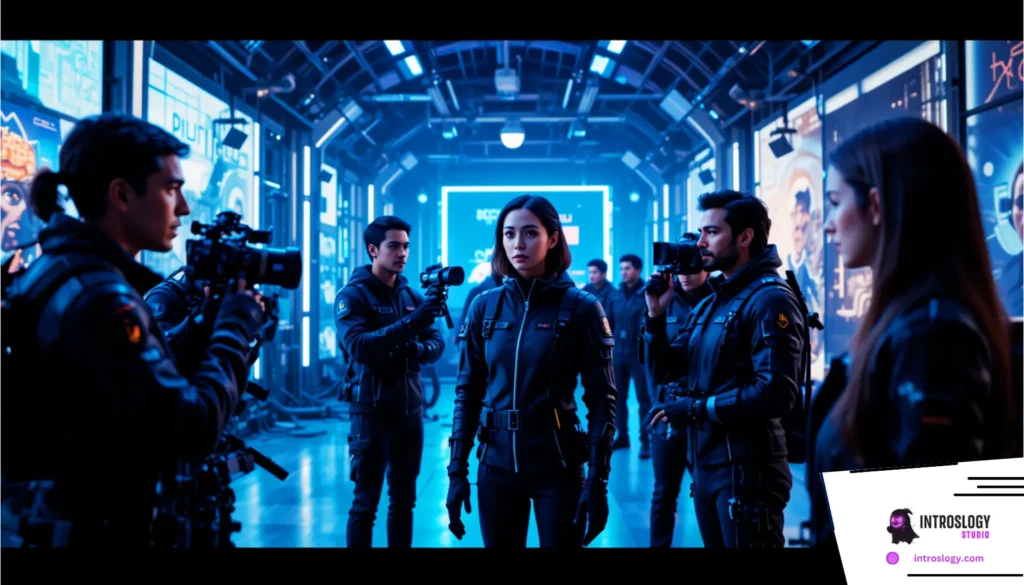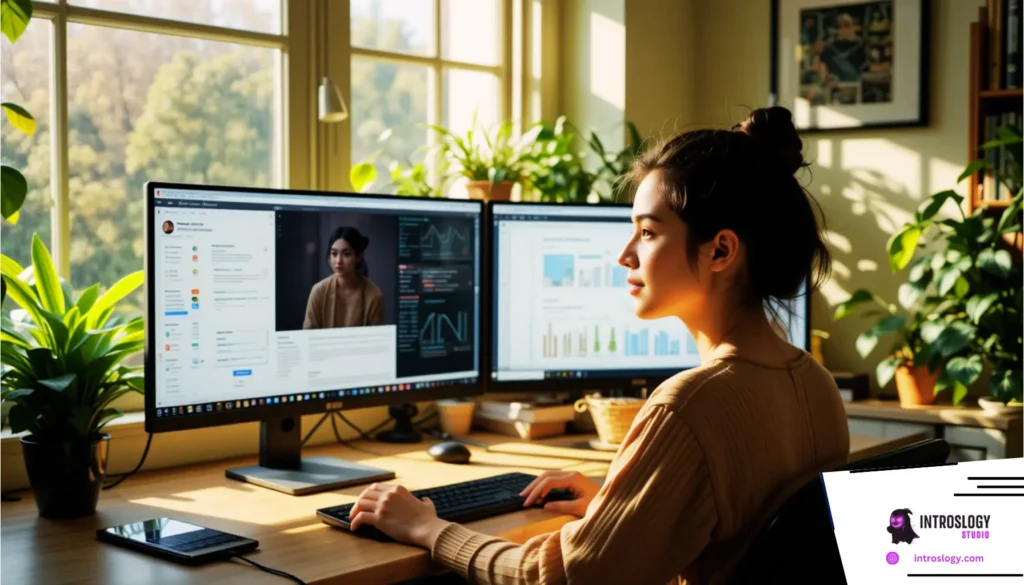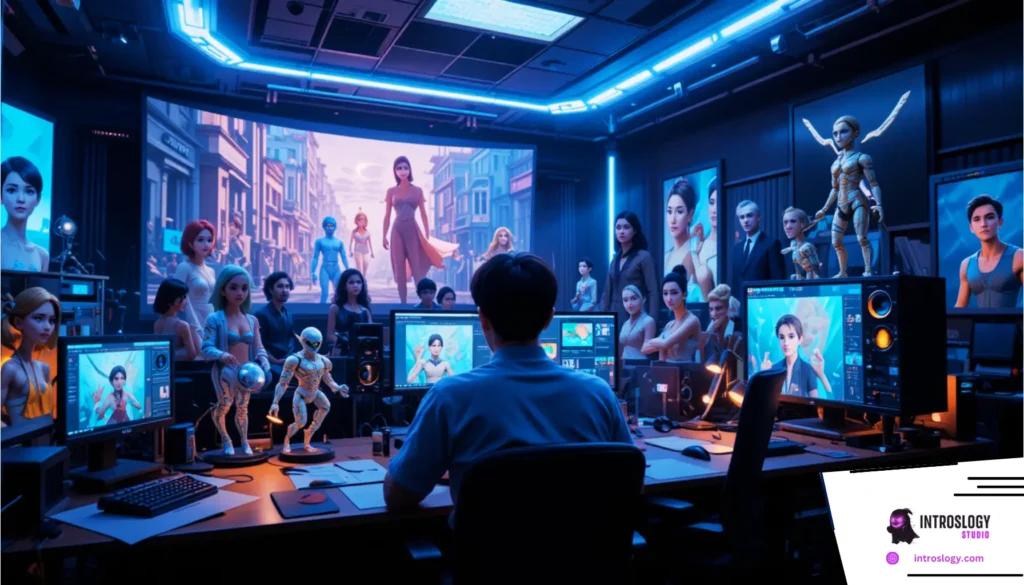
The Evolution of Animation in the Last Decade
Animation has undergone a stunning transformation over the last ten years. Remember when hand-drawn cartoons were the norm and CGI was a rare novelty? Fast forward to 2025, and we’re living in a world where animation blends tradition with cutting-edge tech, making it more accessible and powerful than ever.
From Traditional to Digital
Back in the day, animation meant flipping pages, pencil tests, and months of frame-by-framework. But technology has revolutionized the game. Digital drawing tablets like the iPad Pro and Wacom Cintiq have replaced stacks of paper. Software like Adobe Animate, Toon Boom Harmony, and TV Paint have digitized the entire production pipeline.
The transition from traditional to digital didn’t just speed things up—it opened doors. Animators can now work from anywhere in the world, collaborate in real time, and share their work instantly. Studios have moved away from expensive, hardware-heavy setups toward cloud-based systems that are both scalable and environmentally friendly.
The digital shift has also democratized animation. Today, indie animators and even hobbyists can create stunning visuals from their bedroom studios. Social platforms and crowdfunding sites have allowed creators to fund, promote, and distribute their work without going through traditional gatekeepers.
Rise of Hybrid Techniques
But it’s not all about ditching the old for the new. Hybrid animation—where traditional hand-drawn elements are merged with 3D environments and effects—is booming. Think of movies like Spider-Man: Into the Spider-Verse or Arcane. They aren’t purely 2D or 3D. Instead, they blur the lines, creating unique visual experiences that captivate viewers.
This blending of styles allows for storytelling that’s more expressive, textured, and layered. Artists aren’t boxed into one aesthetic anymore. They can mix watercolor textures with realistic lighting or combine sketchy outlines with lifelike motion. The only limit is imagination.
Hybrid techniques are becoming more mainstream thanks to tools like Blender, which offer compositing, rendering, and real-time previews—all for free. As a result, 2025 is the year hybrid animation goes from experimental to standard.
Real-Time Animation: The Future is Now

If there’s one buzzword dominating the animation industry in 2025, it’s real-time. And it’s not just a trend—it’s a full-blown revolution.
Game Engines like Unreal and Unity in Film Production
Game engines such as Unreal Engine and Unity are no longer exclusive to the gaming world. Studios are increasingly using them to animate entire scenes in real time. Why? Because they offer instant feedback. Creators can adjust lighting, camera angles, and movement on the fly—saving weeks of work and slashing budgets.
The Mandalorian was one of the first big projects to use Unreal for virtual production. Since then, studios large and small have adopted real-time workflows. In 2025, even indie creators are using real-time rendering for shorts, music videos, and social media content.
Real-time animation is especially valuable for previsualization and storytelling. Directors can see what a scene looks like before a single frame is rendered. It’s like storyboarding on steroids—interactive, immersive, and super efficient.
Advantages of Real-Time Rendering
Let’s talk about perks. Real-time rendering reduces the rendering time from hours to milliseconds. That means quicker iterations, fewer errors, and a faster route from idea to screen. It also allows for live collaboration—teams can make changes together in real time, no matter where they are in the world.
This technology also opens up new storytelling possibilities. Imagine animated characters interacting with live audiences during a stream or reacting in real-time during an event. That’s not sci-fi anymore—it’s happening now.
Real-time tools are becoming increasingly accessible. From motion capture suits like Rokoko to facial tracking apps on smartphones, the barrier to entry is dropping fast. By 2025, real-time animation isn’t just the future—it’s the new normal.
AI and Machine Learning in Animation
Artificial Intelligence is no longer a sci-fi trope—it’s a core part of the animation workflow in 2025.
Automated Lip Sync and Motion Capture
Lip-syncing used to be one of the most tedious parts of animation. Matching every syllable to a mouth shape frame by frame? Exhausting. Now, AI can do it in seconds. Tools like Adobe’s Character Animator or DeepMotion use machine learning to analyze audio and automatically generate matching lip movements.
Motion capture has also become cheaper and more precise thanks to AI enhancements. You don’t need a studio full of cameras and dots anymore. A smartphone, a webcam, or even a Kinect can capture your movements and turn them into animated gold.
This automation doesn’t just speed things up—it makes animation more inclusive. Solo creators and small studios can now produce work that rivals big-budget productions, all thanks to AI-powered tools.
AI-Driven Character Design and Storyboarding
AI is even helping in the pre-production phase. Generative tools like MidJourney and DALL·E can assist with character design, giving animators hundreds of style options based on a single prompt. They’re not replacing artists—but they are helping them work faster and explore more ideas.
Storyboarding, too, is getting an AI facelift. Platforms can now take a script and automatically generate storyboard panels using visual prompts. That means fewer bottlenecks in production and more time for refining the creative vision.
By 2025, AI in animation is less about replacing jobs and more about enhancing creativity. It’s the ultimate assistant—quick, reliable, and always learning.
2D Animation Renaissance
Think 2D animation is old news? Think again. In 2025, 2D is making a bold comeback, and it’s cooler than ever.
Why 2D is Making a Comeback
Nostalgia is part of it—millennials and Gen Z grew up on shows like Avatar: The Last Airbender and Sailor Moon. But there’s more to the story. 2D offers a level of charm, warmth, and artistry that 3D often lacks. And thanks to modern tools, it’s easier than ever to produce.
Software like Toon Boom Harmony and OpenToonz has made 2D animation faster and more flexible. Features like vector-based drawing, rigged puppets, and real-time compositing mean animators can focus more on storytelling and less on repetitive tasks.
Studios are also experimenting with mixed media—using 2D characters in 3D environments, adding textures that mimic traditional painting, and pushing the limits of visual design. The result? A surge of fresh, expressive animation that stands out in a world saturated with hyper-realistic 3D.
Stylized Animation in Music Videos and Ads
From animated music videos to TikTok promos, stylized 2D is everywhere. Artists like Billie Eilish and Doja Cat are embracing animated storytelling to create surreal, emotional visuals that live-action can’t capture.
Brands, too, are leaning into the trend. Animation lets marketers tell more creative, memorable stories without the hassle of actors, locations, or props. And in the age of social media, visual uniqueness is everything.
We’re seeing a return to hand-drawn loops, sketchy textures, and experimental frame rates. It’s not about being perfect—it’s about being real, raw, and relatable. 2D animation in 2025 is less polished, more personal, and totally powerful.
Virtual Reality (VR) and Augmented Reality (AR) Integration
The buzz around virtual and augmented reality isn’t just hype anymore—it’s transforming how we experience animation in 2025.
Immersive Animated Storytelling
Gone are the days when you just watched a story unfold on a screen. Now, you’re in the story. With VR, animation has leaped from flat surfaces into fully immersive worlds where viewers become participants.
Imagine walking through an animated forest, interacting with characters, and shaping the narrative with your choices. Platforms like Meta Quest, HTC Vive, and Apple Vision Pro are pushing the envelope, allowing artists to build richly detailed animated environments that users can explore in 360 degrees.
Studios are taking full advantage of this. Indie creators and big names alike are producing VR shorts and films where viewers can walk around scenes and interact with characters. Animated VR experiences like Gloomy Eyes and Battlescar showed what was possible—and now, in 2025, the possibilities have multiplied.
This isn’t just about visuals. Immersive audio, haptic feedback, and real-time interaction all combine to make animation a multi-sensory experience. It’s storytelling evolved.
Education and Training through AR/VR Animation
AR and VR aren’t just for entertainment—they’re changing how we learn. Animated simulations in AR can turn complex subjects like biology or mechanics into engaging, understandable experiences.
Educational platforms now use animated AR overlays to demonstrate processes, walk users through problem-solving steps, and create interactive environments for hands-on practice. Instead of watching a video on how to fix a car engine, you can actually see and manipulate an animated model right in front of you.
In corporate training, animated VR scenarios help workers learn safety protocols, customer service skills, and technical tasks. It’s immersive, memorable, and far more effective than traditional methods.
In 2025, AR and VR animation isn’t a novelty—it’s a necessity.
Interactive and Choose-Your-Adventure Animation
Interactive storytelling is reshaping animation in 2025, creating stories where viewers aren’t just passive watchers—they’re decision-makers.
The Netflix Model and Beyond
Remember Black Mirror: Bandersnatch? That was just the beginning. Since then, interactive animation has exploded in popularity. Netflix, YouTube, and even TikTok are experimenting with formats that allow viewers to choose what happens next.
In animation, this means branching storylines, multiple endings, and character-driven choices. It’s not just cool—it’s sticky. Viewers spend more time engaging with interactive content because they want to see every possible outcome.
Animation is the perfect medium for this. Unlike live-action, it’s easier to create alternate scenes, adjust characters, and seamlessly transition between paths. Plus, the art style helps smooth over the sometimes-jarring jumps in narrative logic that can occur with live actors.
Enhanced Viewer Engagement Strategies
Engagement is king in the digital era, and interactive animation delivers it in spades. By involving viewers in the narrative, creators build deeper emotional connections to the characters and the world.
Some interactive animations are gamified, rewarding users with collectibles, achievements, or unique outcomes based on their choices. Others use real-time feedback—polls, emoji reactions, even voice control—to guide the story.
This approach is especially effective on platforms like YouTube Kids or Netflix Junior, where young viewers can learn cause-and-effect while being entertained. And for adults, branching narratives open up new levels of storytelling complexity and replay value.
In 2025, interaction isn’t an add-on. It’s the expectation.
Animation for Social Media and Short-Form Content
Let’s face it—most people today watch videos on their phones. And animation has adapted to this bite-sized reality with stunning creativity.
TikTok, Instagram Reels, and the Rise of Snackable Animation
Scroll through TikTok or Instagram Reels, and you’ll see it—animated clips, loops, memes, and stories that grab attention fast and hold it. The key? Brevity and boldness.
Animators are creating 10 to 60-second masterpieces that pack humor, emotion, or surprise into tiny packages. These aren’t throwaway bits—they’re polished, stylized, and often go viral. The loopable nature of animation makes it perfect for these platforms, encouraging repeated views and boosting engagement.
Creators like @kellylouisejudd and @ghostfruit have amassed huge followings by posting surreal, expressive animations that are both art and entertainment. Music syncing, quirky characters, and relatable themes make these shorts irresistible.
Short-form animation also excels in storytelling. You don’t need a feature-length runtime to make someone laugh, cry, or think—just a few clever frames.
Tools Empowering Creators to Animate Quickly
You no longer need a massive studio to create amazing animation. In 2025, mobile apps like FlipaClip, RoughAnimator, and Procreate Dreams let creators produce frame-by-frame animation right on their phones or tablets.
Even AI-powered platforms like Animaker and Lumen5 can turn text into animated visuals in minutes. These tools democratize animation, letting anyone—regardless of skill level—experiment, share, and grow.
Social media platforms are even integrating animation tools natively. Snapchat’s Lens Studio and TikTok’s effect tools allow users to animate themselves, objects, and stories with a few taps.
Animation is becoming the new meme format, the new story medium, and the new way to communicate. It’s not just a creative outlet—it’s a social currency.
Sustainability in Animation Production

With global awareness about environmental issues on the rise, sustainability in animation is more important than ever. In 2025, the industry is stepping up in big ways.
Green Pipelines and Remote Collaboration
One silver lining of the pandemic was the realization that animation could be done remotely—without massive studios or commutes. In 2025, many studios have gone fully remote or hybrid, significantly reducing their carbon footprint.
Digital pipelines cut down on paper, travel, and physical resources. Tools like Ftrack, SyncSketch, and ShotGrid allow teams to collaborate in real time, regardless of geography. This not only helps the planet but also opens up animation jobs to global talent.
Studios are also optimizing render farms for energy efficiency. Some even use solar-powered servers or purchase carbon offsets to balance out their emissions.
Sustainability isn’t just good PR—it’s becoming a requirement for working with eco-conscious brands and networks.
Cloud-Based Animation Studios
Welcome to the era of the cloud studio. Services like Amazon Nimble Studio and Google Cloud’s Zync Render offer powerful cloud-based solutions for rendering, asset management, and collaboration.
These platforms let studios scale resources on-demand, reducing hardware waste and energy consumption. No more giant server rooms or wasted GPUs—just clean, efficient, virtual power.
Cloud studios also make it easier for freelancers and small teams to produce high-quality work without upfront investment in expensive gear. It’s leveling the playing field while saving the environment.
In 2025, if your studio isn’t at least partially cloud-based, you’re already behind.
Diversity and Inclusion in Animated Content
In 2025, animation is finally beginning to reflect the world it entertains. Diversity and inclusion aren’t just buzzwords—they’re the driving forces behind many of today’s most successful animated projects.
Multicultural Storytelling and Representation
Audiences are craving stories that feel authentic, that reflect a wider range of cultures, languages, and perspectives. Animated content is answering that call. From African folklore in Kizazi Moto to Indian mythology in Mighty Little Bheem, 2025 has become the golden age of global storytelling.
What’s changed? Streaming services have opened the doors to international audiences, and the demand for localized, culturally rich content has skyrocketed. Studios are hiring diverse writers, directors, and voice actors who bring their lived experiences into their work.
Representation isn’t just a nice-to-have—it’s a business strategy. Animated shows with authentic cultural elements perform better globally because they resonate more deeply. They’re not just stories—they’re reflections of identity.
Even art styles are adapting. We’re seeing traditional art forms, from Persian miniatures to Aboriginal dot painting, influence character and background design. This cultural fusion is giving animation a refreshing new aesthetic that breaks the mold of Western norms.
Gender Equality in Voice Casting and Roles
The push for gender equality has also made huge strides. More female characters are being written as leads—not just sidekicks or love interests. Animated series are now showcasing girls and women as leaders, inventors, warriors, and protagonists with real depth.
Behind the scenes, more women and non-binary professionals are getting hired as animators, writers, and showrunners. Voice casting is becoming more inclusive, with trans actors playing trans roles, and ethnically appropriate casting finally becoming standard.
This shift is empowering new generations of viewers. When kids see themselves represented on screen—not just visually, but in how characters act and speak—they feel seen, understood, and valued.
Inclusion is no longer revolutionary. It’s expected.
Anime Influence on Western Animation
Anime has been a powerhouse of influence for years, but in 2025, its impact on Western animation is more evident than ever.
Blending Styles and Techniques
You can’t scroll through Netflix, Prime Video, or even Cartoon Network without spotting anime’s fingerprints. Big eyes, dynamic motion lines, minimalistic yet emotional storytelling—all of these have become staples in Western animated projects.
But it’s not just about copying. Western creators are embracing anime’s essence: its willingness to be weird, emotional, and deeply philosophical. Shows like Castlevania, Arcane, and The Dragon Prince marry Western narratives with anime-style visuals and pacing.
We’re seeing more frame holds, speedlines, and manga-style paneling used in animation. Even the concept of “sakuga” (moments of extreme animation quality) is now being planned into Western productions to give emotional scenes more punch.
It’s a creative dialogue, not a one-way street.
Growing Collaborations Between Studios
The East-West collaboration trend is booming. Major Western studios are co-producing with Japanese animation giants. Netflix, for instance, has struck deals with Studio Wit, MAPPA, and Science SARU to produce original anime-inspired content.
This partnership is yielding high-quality, globally appealing work. Western audiences get to experience the unique style of anime without subtitles or cultural gaps, while Japanese studios gain more creative freedom and financial backing.
In 2025, the line between “anime” and “cartoon” is blurrier than ever—and fans love it.
The Metaverse and Animation’s Role
The metaverse isn’t just tech jargon anymore—it’s where many people live, work, and play. And animation is at the core of that digital evolution.
Avatar Creation and Digital Worldbuilding
In the metaverse, everyone needs an avatar—and not just a static profile picture. Animated avatars allow users to express themselves in ways that transcend physical limitations. Whether it’s a realistic human form or a stylized creature, animation brings these digital selves to life.
These avatars blink, smile, dance, and interact in real-time, thanks to motion capture and AI animation. Users can personalize everything from expressions to gestures, giving them a more nuanced identity in virtual spaces.
Worldbuilding is just as vital. Virtual worlds—whether in games, social VR platforms, or business meetings—require immersive animated environments. Artists are creating entire cities, planets, and fantasy realms that feel lived-in and visually rich.
Animation breathes life into the metaverse. Without it, the digital world would be a dull, flat experience.
Persistent Animated Experiences in the Metaverse
In the metaverse, nothing is ever truly “off.” Animated events can run continuously—think concerts, story-driven quests, or interactive exhibits that evolve over time.
Brands are getting in on this too. Animated billboards, mascots, and digital storefronts are becoming standard. Imagine walking through a virtual mall where every store is animated, responsive, and unique.
Storytelling in the metaverse is persistent. Your actions change the narrative, and that change sticks. It’s a mix of animation, AI, and player agency that’s rewriting how stories are told.
In 2025, animation is the foundation of the metaverse. It’s how we see, feel, and shape our virtual existence.
Animation in Marketing and Branding
Forget static logos and dry product videos. In 2025, animation is the heart of marketing—and it’s getting more dynamic every day.
Animated Logos and Mascots
Remember the days when logos just sat there? Now, they dance, morph, and tell a story. Animated branding is a powerful tool for grabbing attention and making an impression.
Brands are investing in animated mascots and logos that have personality. Think of Geico’s gecko or Duolingo’s owl—but on steroids. These characters are now dynamic, appearing in everything from app loading screens to full-blown web series.
Even small businesses are getting into the action. With platforms like Canva, Vyond, and MotionArray, creating animated brand assets is more affordable than ever.
These living brand elements stick in viewers’ minds. They humanize the brand and create emotional connections that static designs just can’t match.
Branded Storytelling through Animation
Brands aren’t just selling products—they’re telling stories. Animated shorts, explainer videos, and interactive ads allow businesses to weave narratives that resonate with audiences.
Whether it’s a 30-second YouTube ad or a three-minute animated origin story, animation makes complex ideas digestible and engaging. It’s especially useful for tech companies, medical services, and education brands where visual metaphors can clarify abstract concepts.
Storytelling is what makes a brand memorable. And in 2025, animation is the ultimate storytelling tool.
Tools and Software Transforming Animation in 2025
Animation tools are evolving faster than ever, empowering creators and streamlining production.
Top Animation Tools of the Year
Here are a few of the heavy hitters in 2025:
- Blender – Still free, still powerful, now even better with AI-assisted features.
- Toon Boom Harmony – The industry standard for 2D animation, with improved rigging and auto-tweening.
- Adobe Animate & After Effects – Enhanced with real-time collaboration tools and AI motion suggestions.
- Procreate Dreams – A new favorite for 2D animators on iPad, offering frame-by-frame with a sleek UI.
- Unreal Engine – Now a go-to for animated films and series, thanks to real-time rendering and mocap integration.
These tools are revolutionizing workflows, making it faster and cheaper to animate at a professional level.
Accessibility of Professional Tools for Indie Creators
Perhaps the biggest change? These tools are no longer locked behind big budgets. Affordable pricing models, cloud access, and mobile-friendly design mean that indie creators have never had more power.
Courses, tutorials, and communities are abundant. Whether you’re 16 and drawing on your phone or 60 and experimenting with your first short, the doors are wide open.
In 2025, if you’ve got a story to tell, the tools to animate it are right at your fingertips.
Conclusion: Where Animation Is Heading in the Future

Animation in 2025 isn’t just about looking pretty—it’s about innovation, inclusion, interactivity, and imagination. From AI-powered workflows and real-time engines to socially impactful stories and immersive experiences, the animation landscape is evolving at lightning speed.
Whether you’re an artist, storyteller, educator, or brand, animation is your playground. It’s never been more accessible, diverse, or exciting.
The future? It’s animated—and it’s limitless.
FAQs
What is the most popular animation style in 2025?
Stylized 2D-hybrid animation is trending, combining hand-drawn aesthetics with 3D depth and motion. Think Arcane or Spider-Verse style visuals.
How is AI changing animation production?
AI accelerates animation by automating lip sync, motion capture, character design, and even storyboarding, allowing creators to focus on storytelling and creativity.
Is 2D animation still relevant?
Absolutely. 2D is experiencing a renaissance thanks to digital tools and growing demand for stylistic, emotionally rich storytelling.
What platforms are best for short-form animated content?
TikTok, Instagram Reels, and YouTube Shorts are leading platforms for bite-sized animated content that grabs attention and goes viral.
Can anyone learn animation today with current tools?
Yes! Tools like Procreate Dreams, Blender, and Adobe Animate are user-friendly, and free resources are everywhere. Anyone can start animating with minimal investment.
